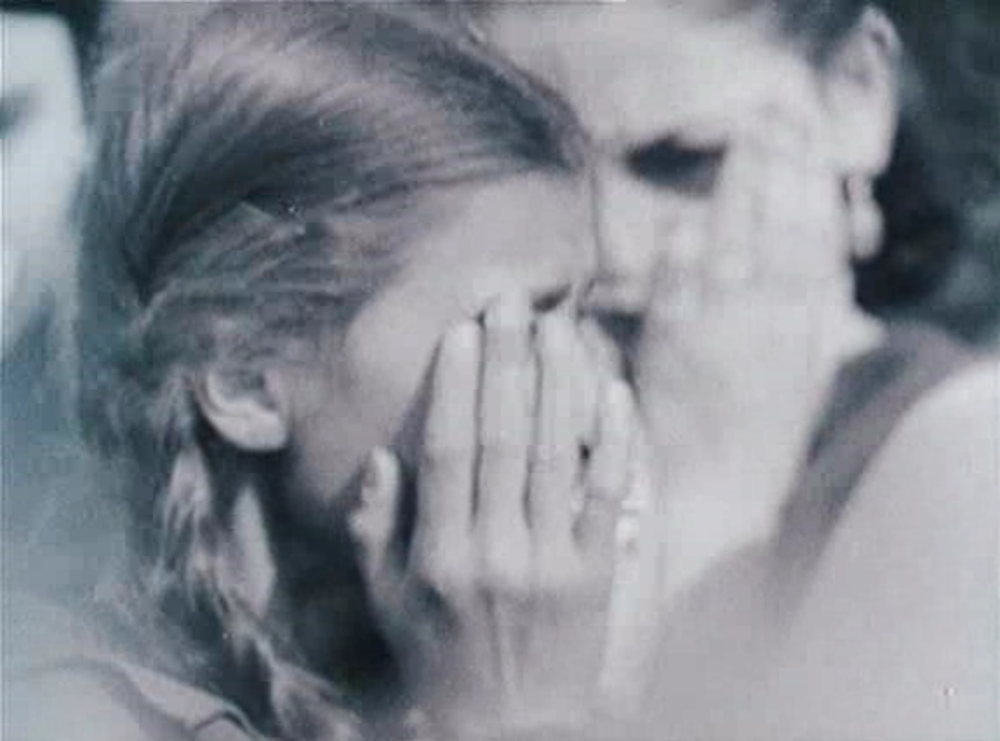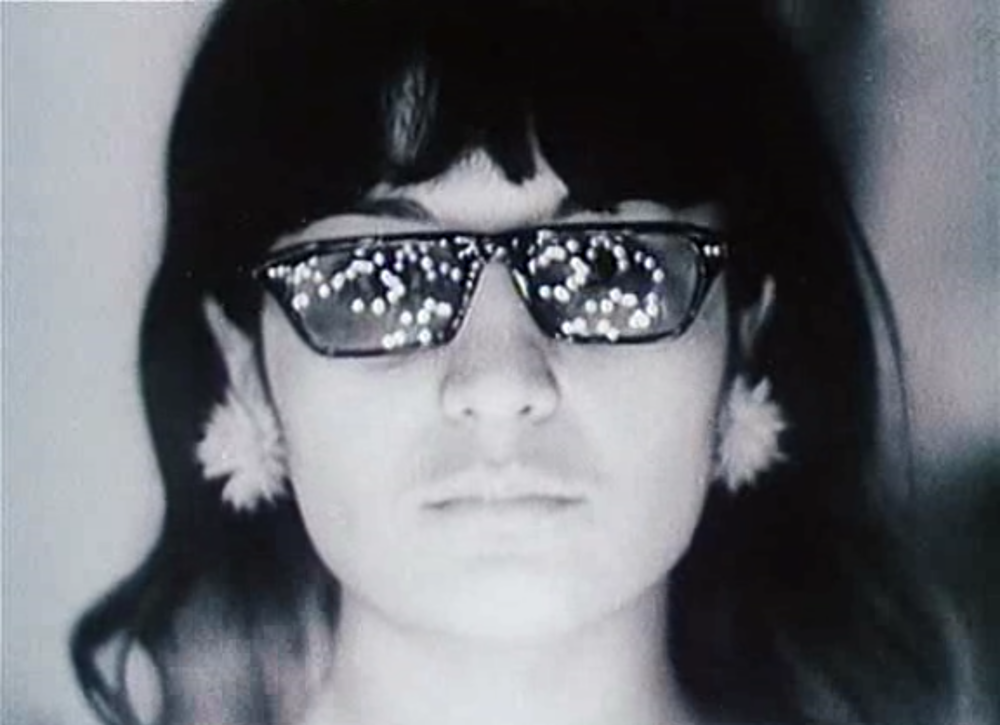Between 1969 and 1982, Pelechian made a series of four major works: uniquely crafted short and medium-length films composed of documentary images. Rooted in universal themes exploring human destiny, such as birth, exile, and animal life, each of his films attests to Pelechian’s belief in a language unique to cinema.
Both archives and actual footage shot by the filmmaker, the images gathered for his films are reworked and edited together to create veritable visual poems. Considered one of the rare filmmakers to have invented his own cinematic language, during this period, he developed and practiced a theory of montage that he called “distance montage” or “contrapuntal editing.” His films also set themselves apart in their unprecedented use of composed music, and more broadly of sound, as dynamic elements of the montage on equal footing with image.
In parallel to the completion of his own projects, Pelechian collaborated on a number of other film projects, often as a screenwriter. In 1979, at the request of the filmmaker Andrei Konchalovsky, he directed a montage sequence of archival footage for the latter’s film Siberiade.
On the occasion of the exhibition Artavazd Pelechian, Nature at the Fondation Cartier, in the newspaper Libération, the French filmmaker Leos Carax revealed his immense admiration for Pelechian and his cinema, which Carax discovered in the early 1980s as he was making his foray into film. In his words, “Pelechian’s world has stayed with me ever since, like a childhood realm.”
Leos Carax in Libération, 24-25 october 2020.
FILMOGRAPHY
· 1964 | Mountain Patrol
· 1966 | Land of the People
· 1967 | The Beginning
· 1969 | We
· 1970 | The Inhabitants
· 1975 | The Seasons
· 1982| Our Century
· 1992 | The End
· 1993 | Life
· 2020| Nature
In the following video interview, Jean-Michel Frodon describes the fundamental originality of Pelechian’s cinema. Frodon is a journalist, critic, teacher, and film historian, formerly in charge of the film section of Le Monde. He was also editorial director of Cahiers du Cinéma. He is currently a member of the educational committee of SPEAP, an experimental program in art and politics at the Institut d’Études Politiques de Paris.
1969: We
Մենք | Мы
35 mm, black & white, 26 min, Armenia / USSR
A vibrant tribute to the Armenian people, We portrays exile, reunion, collective fervor, destruction, and reconstruction, capturing the tumults of Armenia’s history. With this film, Pelechian explored distance montage for the first time.
Image gallery
The first of Pelechian’s films to be screened in the West, We was shown at the International Short Film Festival Oberhausen in Germany, where it received first prize from the jury.
Official certificate of first prize from the jury given to the film We by Artavazd Pelechian, Oberhausen Festival, 1970.
• DISTANCE MONTAGE
In the presence of two important shots, charged with meaning, I strive not to bring them closer, not to make them collide, but to create distance between them. A much stronger and deeper expression of meaning can thus be achieved than when the shots are joined in a consecutive way, and the informative capacity takes on colossal proportions. I call this type of montage "distance montage".Artavazd Pelechian, Moyo Kino [My cinema], 1988, Sovetakan Grogh Publishers.
His practice of cinematic montage escapes the classical rules of montage, developed by the film pioneers of the early decades of the 20th century, in particular, Sergei Eisenstein in the USSR, Georges Méliès in France, and D.W. Griffith in the United States. Whereas classical montage tended to place two images next to each other that are together of significance, Pelechian to the contrary strives to distance them, placing other images and sounds in between in order to emphasize the echo they have with each other. Distance montage thus structures itself by playing with repetitions and subtle variations in visual and sound motifs. He presents this scrupulous montage method in a famous theoretical text, “Contrapuntal Montage, or the Theory of Distance,” written at the beginning of the 1970s and published in a collection of texts published in Russian under the title Moyo Kino [My cinema] in 1988.

Artavazd Pelechian, “Contrapuntal Montage, or the Theory of Distance,” in Trafic, n°2, 1992, Éditions P.O.L
“A Pelechian film is constructed like a rosary, with a larger bead periodically separating series of smaller beads. The larger beads are the “support sequences,” and the smaller ones, distributed between them, are the “independent sequences”. There are a limited number of support sequences—two, three, four. They contain few shots, and consistently use select shots from previous support sequences. They function as a chorus. Between them, the independent sequences, sometimes reduced to a single shot, are subject to widely varied combinations of which the general rule is quickness allied with repetition.”
Barthélemy Amengual, “Sur Cinq Films d’Artavazd Pelechian” [On five films by Artavazd Pelechian], in Cahiers de la Cinémathèque, no. 67/68, December 1997.
1970: The Inhabitants
Բնիկներ | Обитатели
35 mm, black & white, 10 min, Belarus / USSR
In this pioneering film, hordes of wild animals, the planet’s other inhabitants, flee an invisible threat, which audiences gradually link to the human imprint on the planet.
Image gallery
• MUSIC
I believe that we can hear images and see sound.Artavazd Pelechian, “Un langage d’avant Babel”, conversation with Jean-Luc Godard, in Le Monde, 1992
“Pelechian’s cinematic writing, devoid of any narration, subtly places image and sound on equal footing. The filmmaker leaves nothing to chance in his choice of music, meticulous and eclectic: throughout his filmography, he “invites” into his films composers as varied as Wolfgang Amadeus Mozart, Jean-Michel Jarre, Tigran Mansurian, Dmitri Shostakovich, Antonio Vivaldi, Pink Floyd, and Tigran Hamasyan, revealing his appreciation for music from the past and present alike. The music and sound material are used as elements to spark montage in the same way as image, to such an extent that commentaries on his work frequently use a musical metaphor, comparing his films to veritable symphonies.”
François Niney, “Artavazd Pelechian ou la Réalité Démontée” [Artavazd Pelechian or the dismantled reality], in Le Cinéma Arménien, 1993.
In the following video interview, Philippe Azoury shares his reflections on the role of music in Pelechian’s work. Azoury, a journalist, film and music critic, has written for Cahiers du Cinéma, Libération, Les Inrockuptibles, and Vogue Paris. He is currently editor in chief of culture at Vanity Fair.
Music in the work of Artavazd Pelechian
Discover a selection of musical pieces chosen by Artavazd Pelechian for his films, by clicking on "View all videos".
1975: The Seasons
Տարվա եղանակները | Времена года
35 mm, black & white, 29 min, Armenia / USSR
With its epic sweep, The Seasons follows a community of Armenian peasants in their daily existence, attuning their relationship with nature to the rhythm of the seasons. The film reveals the humble relationship connecting them to the natural environment in which they live and work.
The filming of The Seasons has long elicited questions as to the techniques used to produce certain particularly acrobatic shots. The filmmaker has given the following mischievous reply: “In The Seasons, the cameraman held onto the camera, and I held onto the cameraman.”
Image gallery
We and Our Mountains
In 1969, Pelechian didn’t only make We. Exceptionally, he also acted in a film by the Armenian director Henrik Malyan, We and Our Mountains, a comedy portraying four shepherds from the high mountains of Armenia. In these images, we see the character played by Pelechian in a context quite similar to that of the film The Seasons, while the two films remain very different in aesthetic and narrative terms.
Image gallery
1982: Our Century
Մեր դարը | Наш век
35 mm, black & white, 48 min (1982) / 30 min (1990), Armenia / USSR
Our Century evokes the race to the stars embarked upon by the United States and the USSR in the 20th century, turning the utopia of Icarus’s dream into a frantic technological competition.
Image gallery

• THE COSMOS
The subject of the film Our Century illustrates Pelechian’s personal interest in understanding the laws governing the cosmos and our position in the vast universe. This subject so enthralls the filmmaker that in 2015 he published a book in Russian under the title Moya vselennaya i yedinaya teoriya polya [My Universe and Unified Field Theory], in which he explores contemporary conceptions of laws of the cosmos in relation with his own cinematic conceptions. He thus echoes what he had written several decades earlier in his text “Contrapuntal Montage”: “The method of contrapuntal montage crosses limits beyond which our conceptions and our laws governing space and time are null and void, and beyond which some are oblivious to whom they kill in being born while others are oblivious to whom they give birth to in dying.”
































